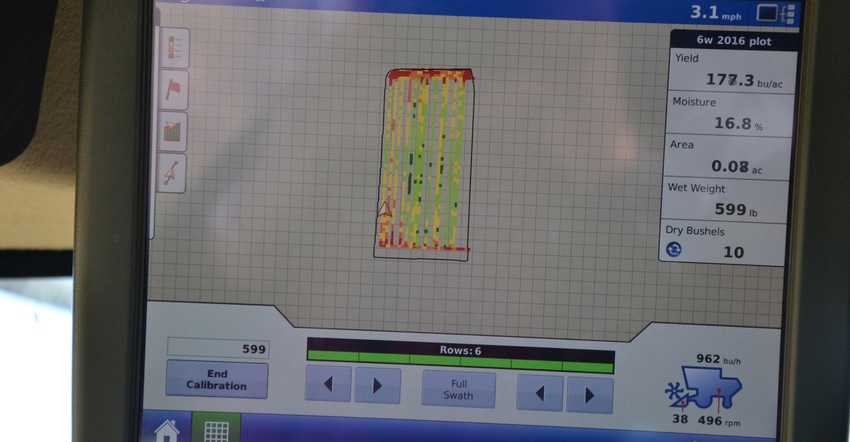
David Hula, Charles City, Va., holds the record for the highest corn yield ever achieved in the National Corn Growers Association annual yield contest. He produced 532 bushels per acre in 2015. Randy Dowdy, Valdosta, Ga., posted his second national win in 2016, producing 521 bushels per acre on irrigated land. Back-to-back yields over 520 bushels per acre begs the question: Just how high could corn yield go?
Dowdy visited AgReliant Genetics in Westfield recently. AgReliant is the parent company of AgriGold. Dowdy's son took second place in the 2016 yield contest, and both Dowdy entries were AgriGold hybrids.
Here are some insights from the 2016 NCGA yield contest champion:
Consider anecdotal evidence. “In 2014 we had a yield monitor which only read up to 400 bushels per acre,” Dowdy recalls. “At one point, it pegged at 400 bushels per acre and stayed there for 2,000 feet.”
Later, raw data from the monitor revealed that at some points in that stretch, yield actually reached 600 bushels per acre. Dowdy has talked to other farmers who pursue top yields who also report seeing 600-bushel readings on their yield monitors at certain points.
Dowdy says in his contest field in 2016, he saw yield monitor readings at the 400-, 500- and 600-bushel level.
Interact with others. “This contest has helped me meet people who have other ideas about how to reach high yields,” Dowdy says. Some ideas are different from what he has tried. They share what works for them, and he shares what has worked for him.
“I don’t mind sharing information with others,” Dowdy says. “We’ve had success, and I believe in paying it forward.”
Interaction among farmers and agronomists pushing for high yields could help unlock the secret to how high yields could go with correct management and cooperative weather.
Probe what sufficiency levels mean. Dowdy is a big believer in tissue sampling. He pulls samples nearly every week during the growing season. Back in ’08, when he first grew corn, he remembers getting tissue sample results back that said all nutrient levels were sufficient. “I called the lab and wanted to know exactly what that meant,” he recalls. “Were nutrient levels sufficient for 100-bushel-per-acre corn or 400-bushel-per-acre corn? They didn’t have an answer.”
Since then, Dowdy has kept records on all tissue sample results. His goal is to eventually determine what the nutrient profile looks like for 200-, 300-, 400- and even 500-bushel corn at various points in the season.
Utilize local resources. Before the season even begins, Dowdy knows that his crop will be challenged by disease. In his case, it’s not if, but when and how much. To guide him in determining what to look for and what to expect week by week, he relies on sentinel plots maintained by the University of Georgia. These plots are designed to detect disease moving into the area and provide early notification.
Several other states have some sort of statewide system. In Indiana, for example, Purdue University issues a crop and pest newsletter each week during the season. It often contains information on diseases, plus moth captures in traps for key insects. The goal is to help good managers get a jump on scouting and decision-making to protect yield potential.
About the Author(s)
You May Also Like




